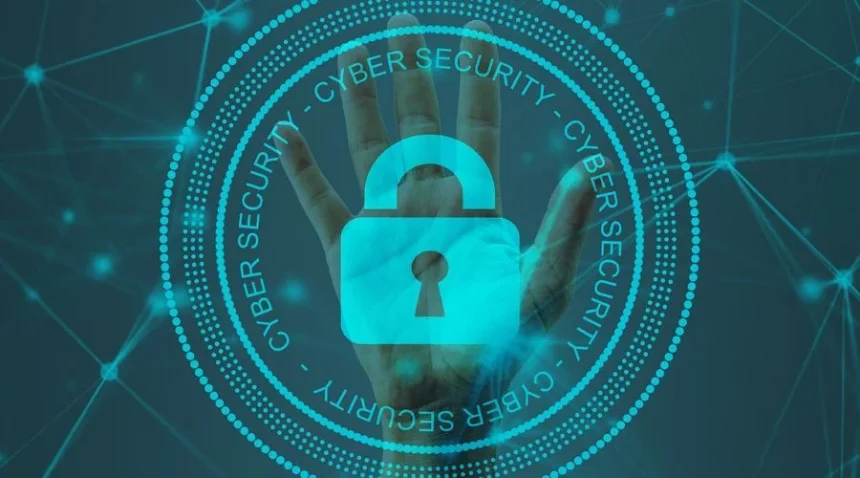As technology advances, so do the methods of cybercriminals. Businesses are becoming increasingly vulnerable to cyberattacks, and the consequences can be catastrophic. From stolen customer data to financial loss, the damage caused by a breach can be irreparable. That’s why cybersecurity is crucial for every business, no matter the size or industry. In this digital age, it’s not enough to simply have firewalls and antivirus software. You need a comprehensive security plan that covers all aspects of your business, including employee training, data encryption, and regular vulnerability assessments. In this article, we’ll explore why cybersecurity is so important, the common threats you may face, and the steps you can take to secure your business against them. Don’t wait until it’s too late; start protecting your business today with these essential cybersecurity measures.
The Importance of Cybersecurity for Businesses
Cybersecurity is more than just a buzzword. It’s a critical aspect of protecting your business against the many threats that exist in the digital world. A breach can lead to a loss of valuable data, reduced productivity, financial loss, and damage to your business’s reputation. It’s important to implement a cybersecurity plan that is tailored to your business’s unique needs. This includes identifying your most valuable assets, assessing your vulnerabilities, and creating a plan to protect them.
A cybersecurity plan should also include regular training for employees. Many cyberattacks are the result of human error, such as falling for a phishing scam or using weak passwords. By educating employees on best practices, you can reduce the risk of a breach. Additionally, a comprehensive cybersecurity plan can help you comply with regulations such as HIPAA, PCI DSS, and GDPR.
In short, cybersecurity is not an optional extra for businesses; it’s an essential part of doing business in the digital age. Protecting your business against cyber threats should be a top priority.
Cybersecurity Threats Faced by Businesses
Cybersecurity threats come in many forms, and they are constantly evolving. Hackers are always finding new ways to exploit vulnerabilities and steal data. Here are some of the most common threats that businesses face:
Malware
Malware is a type of software designed to harm your computer or steal your data. It can take many forms, such as viruses, worms, and Trojans. Malware can be spread through email attachments, downloads, or infected websites. Once installed, it can steal personal information, log keystrokes, and take control of your computer.
Phishing
Phishing is a type of social engineering attack that targets individuals or businesses. It typically involves an email that appears to be from a legitimate source, such as a bank or a government agency. The email will ask the recipient to click on a link or provide personal information. Once the information is provided, the attacker can use it to steal money or identity.
Ransomware
Ransomware is a type of malware that encrypts your files and demands payment in exchange for the decryption key. It can be spread through email attachments, downloads, or infected websites. Once installed, it can lock down your entire system, making it impossible to access your data.
These are just a few examples of the many cybersecurity threats that businesses face. It’s important to be aware of these threats and take steps to protect your business.
Types of Cybersecurity Attacks
Cybersecurity attacks can take many forms, and they are constantly evolving. Here are some of the most common types of attacks:
Distributed Denial of Service (DDoS)
A DDoS attack is when a hacker floods a website with traffic, making it unavailable to users. This is typically done using a network of compromised computers, known as a botnet. DDoS attacks can be used to extort money from businesses or disrupt their operations.
Man-in-the-Middle (MitM)
A MitM attack is when a hacker intercepts communication between two parties, such as a user and a website. The attacker can then eavesdrop on the conversation, steal information, or manipulate the data. MitM attacks are typically done over unsecured Wi-Fi networks, such as those in coffee shops or airports.
SQL Injection
An SQL injection attack is when a hacker exploits a vulnerability in a website’s database. This allows them to run malicious code and steal data. SQL injection attacks are typically done by entering malicious code into a website’s search bar or contact form.
These are just a few examples of the many types of cybersecurity attacks that businesses face. It’s important to be aware of these attacks and take steps to protect your business.
Cybersecurity Best Practices for Businesses
Now that you know the importance of cybersecurity and the types of threats you may face, it’s time to take action. Here are some best practices to help protect your business:
Keep software up to date
One of the easiest ways to protect your business is to keep your software up to date. This includes operating systems, applications, and antivirus software. Updates often contain security patches that address known vulnerabilities.
Use strong passwords
Passwords are the first line of defense against cyberattacks. Make sure your employees use strong passwords that are difficult to guess. Consider using a password manager to generate and store strong passwords.
Encrypt sensitive data
Encryption is the process of converting data into a code that can only be deciphered with a key. This can help protect your sensitive data in case of a breach. Make sure you encrypt any data that contains personal or financial information.
Use two-factor authentication
Two-factor authentication adds an extra layer of security to your accounts. It requires users to provide two forms of identification, such as a password and a code sent to their phone. This can help prevent unauthorized access to your accounts.
Conduct regular vulnerability assessments
A vulnerability assessment is a process of identifying weaknesses in your network or systems. It can help you identify and fix vulnerabilities before they are exploited by attackers. Consider hiring a professional to conduct a vulnerability assessment for your business.
These are just a few examples of cybersecurity best practices. Implementing these practices can help protect your business against cyber threats.
Creating a Cybersecurity Plan
Creating a cybersecurity plan can help you identify and mitigate risks to your business. Here are some steps to create a cybersecurity plan:
Identify your most valuable assets
Identify the data and systems that are most critical to your business. This can include customer data, financial records, and intellectual property.
Assess your vulnerabilities
Identify the vulnerabilities in your systems and networks. This can include outdated software, weak passwords, and unsecured Wi-Fi networks.
Create a plan to mitigate risks
Develop a plan to mitigate the risks you’ve identified. This can include implementing best practices, such as those listed above, and investing in cybersecurity technologies.
Train your employees
Educate your employees on cybersecurity best practices. This can help reduce the risk of human error and strengthen your overall security posture.
Monitor and update your plan
Regularly monitor and update your cybersecurity plan to ensure it remains effective. Cybersecurity threats are constantly evolving, so it’s important to stay up to date on the latest threats and best practices.
Common Cybersecurity Tools and Technologies
There are many cybersecurity tools and technologies available to businesses. Here are some of the most common:
Firewall
A firewall is a network security device that monitors and filters incoming and outgoing traffic. It can help block unauthorized access to your network.
Antivirus software
Antivirus software is a program that detects and removes malware from your computer. It can help protect against viruses, worms, and Trojans.
Virtual Private Network (VPN)
A VPN is a tool that encrypts your internet traffic and routes it through a private network. This can help protect your data when using public Wi-Fi networks.
Intrusion Detection System (IDS)
An IDS is a network security system that monitors and analyzes network traffic for signs of a cyberattack. It can help identify and respond to threats in real-time.
Security Information and Event Management (SIEM)
SIEM is a tool that collects and analyzes security-related data from multiple sources. It can help identify and respond to security threats in real-time.
These are just a few examples of the many cybersecurity tools and technologies available to businesses. It’s important to choose the tools that are best suited to your business’s unique needs.
The Role of Cybersecurity Insurance
Cybersecurity insurance can help protect your business in the event of a cyberattack. It can cover losses such as data theft, business interruption, and legal fees. Cybersecurity insurance can also help cover the costs of recovering from a breach, such as restoring data and repairing systems.
When choosing cybersecurity insurance, it’s important to carefully review the policy to ensure it covers your specific needs. Cybersecurity insurance can be expensive, so it’s important to weigh the costs against the potential benefits.
Hiring a Cybersecurity Professional
If you don’t have the expertise in-house to implement a cybersecurity plan, consider hiring a cybersecurity professional. A cybersecurity professional can help assess your vulnerabilities, create a comprehensive security plan, and implement best practices. They can also help monitor your systems for signs of a breach and respond to threats in real-time.
When hiring a cybersecurity professional, it’s important to choose someone with experience and expertise in your specific industry. Look for certifications such as Certified Information Systems Security Professional (CISSP) or Certified Ethical Hacker (CEH).
Conclusion: Taking Action to Secure Your Business
In conclusion, cybersecurity is crucial for every business in the digital age. Cyberattacks are becoming increasingly common, and the consequences can be devastating. By implementing best practices, creating a cybersecurity plan, and investing in cybersecurity technologies, you can help protect your business against cyber threats. Don’t wait until it’s too late; start taking action to secure your business today.









